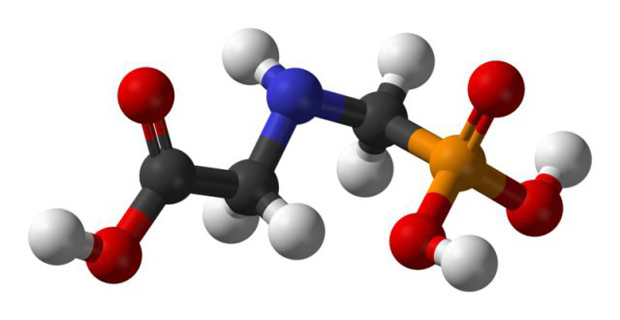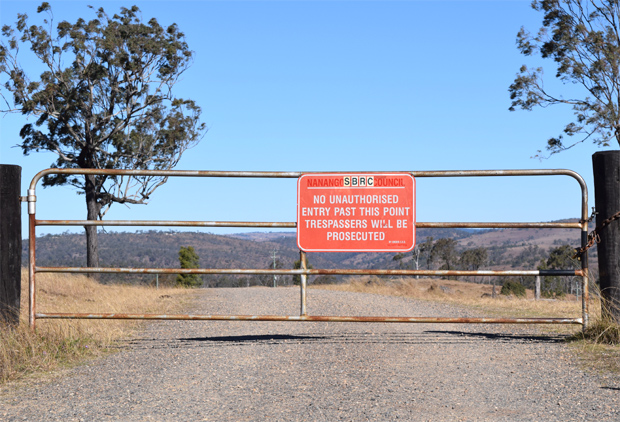
(Photo: Wikipedia)
March 27, 2015
The world’s most popular herbicide, glyphosate, has been labelled as “probably carcinogenic to humans” by international researchers after a review of existing studies.
Earlier this month, 17 experts from 11 countries met at the World Health Organisation’s International Agency for Research on Cancer (IARC) in France to assess the carcinogenicity of different organophosphate chemicals used as pesticides or herbicides.
Their findings are summarised in The Lancet medical journal (free text available after registering with website).
The classification that has attracted the most attention is their report on glyphosate, a herbicide discovered by Monsanto which is now used in more than 750 products, both on farms and in home gardens.
The researchers said there was “limited evidence in humans for carcinogenicity” but after examining epidemiological studies, animal studies, and in vitro studies, classified the herbicide as “probably carcinogenic to humans”.
The IARC team reported:
- The use of glyphosate has risen in agriculture in recent years due to the development of glyphosate-resistant crops
- Case-control studies of occupational exposure in the USA, Canada and Sweden have reported increased risks for non-Hodgkin lymphoma. However, a large cohort study of agricultural workers did not show any significantly increased risk
- Glyphosate has been detected in the blood and urine of agricultural workers, indicating absorption
- Microbes in the human gut may be able to metabolise glyphosate. Soil microbes degrade glyphosate to aminomethylphosphoric acid (AMPA). AMPA has been detected in humans after poisonings
- One study reported increases in blood markers of chromosomal damage in residents of several communities after spraying of glyphosate formulations
- Some mice studies indicated exposure to glyphosate was linked to different types of tumours (in mice)
* * *
Monsanto – the manufacturer of the popular Roundup glyphosate product – has attacked the classification and labelled it as “junk science” on its website.
“We are outraged with this assessment,” chief technology officer Dr Robb Fraley said.
“This conclusion is inconsistent with the decades of ongoing comprehensive safety reviews by the leading regulatory authorities around the world that have concluded that all labeled uses of glyphosate are safe for human health.
“This result was reached by selective ‘cherry picking’ of data and is a clear example of agenda-driven bias.”
External links:
- Decades of Data and Regulatory Review Clearly Document Safety of Glyphosate
- Monsanto Disagrees With IARC Classification
[UPDATED with correction]

























Use the common sense test anyone can apply by looking at glyphosate’s chemical structure, shown above.
It consists of (left-to-right) a carboxylate group found in hundreds of organic acids in cells such as those of the tricarboxylic acid cycle discovered by Krebs, an amino group found in all amino acids like glycine and glutamic acid forming proteins and a phosphate group likewise found in many key metabolites like phosphoenolpyruvate, its competitor. It just happens that this particular combination found in glyphosate binds firmly to a key enzyme found uniquely in plants and some microbes making aromatic molecules that are needed to make wood. It has no general toxicity at all except for this highly specific effect never occurring in animals. It has some chelating activity for metals more likely to reduce toxicity or biological effects. None of these three groups is ever considered to cause cancer or even to disrupt DNA, unless we consider general effects on water’s activity at high concentrations caused by any salt. In contrast, hundreds of known carcinogens are so because of different groups altogether, such as nitroso-, heavy atoms like bromine or resonant structures like benzene. Glyphosate has none of these structures.
Unless very direct evidence is found that it is a carcinogen because of some newly discovered principle, we can logically disregard the few studies, accepted perversely by IARC as probable evidence of carcinogenicity against all other evidence, as statistical anomalies or their misinterpretations. IARC urgently needs to revise its methodology to avoid becoming a laughing stock or being regarded from now on as having a political agenda.
By the way, IARC’s new claim was that it is “probably carcinogenic in humans”, far more irresponsibly than “possibly”, true of almost anything if we neglect causation for correlation.